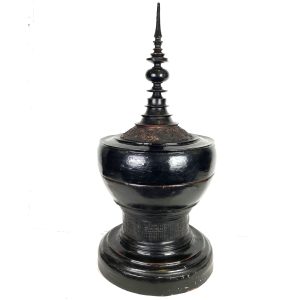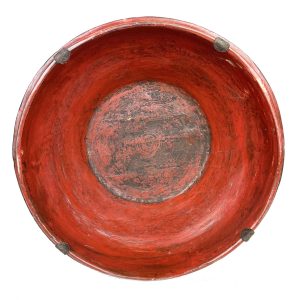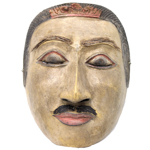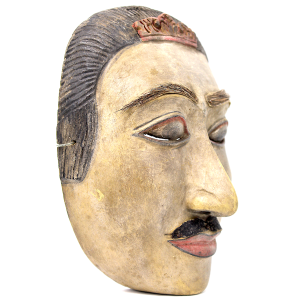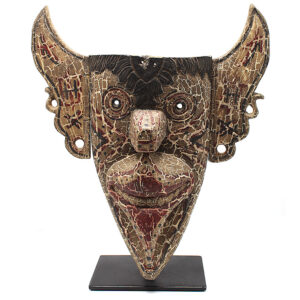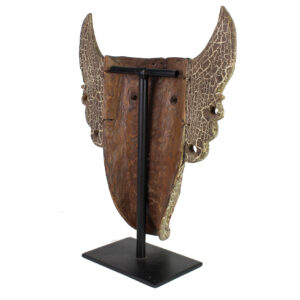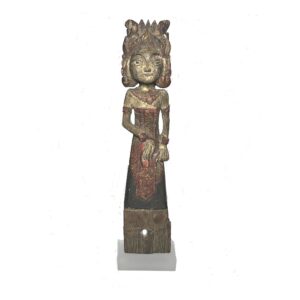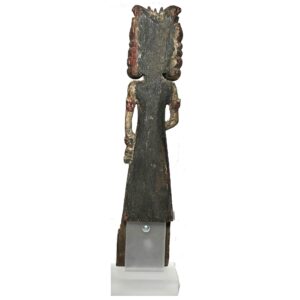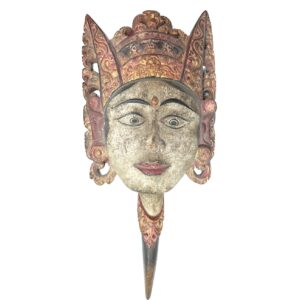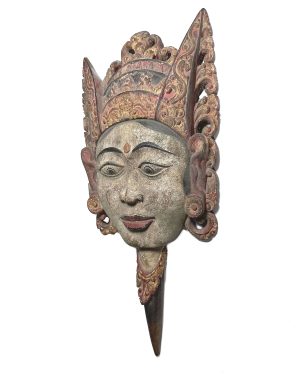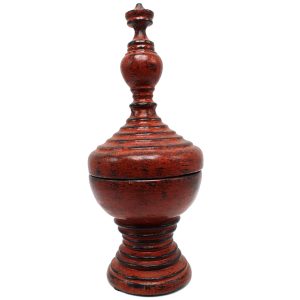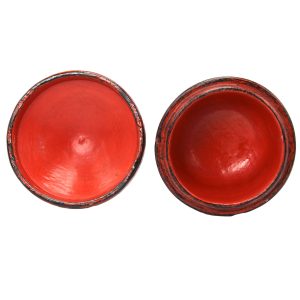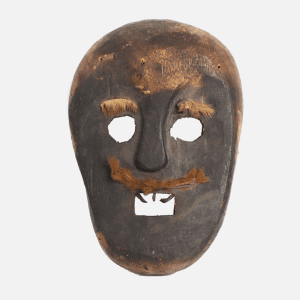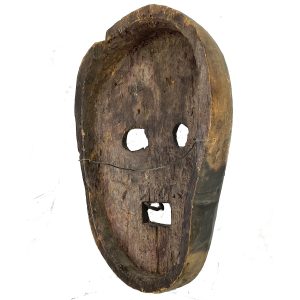Showing 13–20 of 20 results
-
Sale!


$695.00 Original price was: $695.00.$495.00Current price is: $495.00.
H: 26.25″ Dia: 12.5″ |CALL 213-568-3030 OR EMAIL [email protected] FOR SHIPPING COST
Artfully shaped lacquered Hsun Ok for offerings to monks lid with a finial symbolizing a Buddhist stupa and applied mythical animals and floral decorations. Early 20th century pieces with these special details are harder to find and copies abound.
-


$105.00
This Dalem is a traditional folk-art and ethnic mask (topeng) from Bali made from pulai wood of a Hindu king (Dalem). He stares directly at the viewer while his high cheeks help express his poise and the ability to remain cool in a crisis. This is a fine example of a gifted carver able to…
-


$485.00
H: W: D: Ht: 14.75″ W:12.125″ | FREE SHIPPING WITHIN CONTINENTAL U.S.
-
Sale!


$425.00 Original price was: $425.00.$395.00Current price is: $395.00.
Ht: 14.5” W: 3.5” D: 2.25” | FREE SHIPPING WITHIN CONTINENTAL U.S
Rare vintage carving dedicated to Dewi Sri, Balinese Goddess of Rice. was probably made for a home shrine or small rice field temple . Hole near the bottom indicates it may have been part of a larger decorative scheme.
-


$675.00
The religion of the ethnic Dayak (Dyak) people of Kalimantan (Borneo), Indonesia is a mix of animism, shamanism and ancestor worship. Their word hudoq describes three different things: it describes the pests that can destroy the rice harvest on which their survival depends; the name of the huge yearly Dyak planting celebration and the name…
-


$265.00
H: 14.5″ W: 6.625″ D: 2.375″ | FREE SHIPPING
This very fine and very beautiful vintage woodcarving of Dewi Sri , Devi Sri or Sridevi in Java, the Balinese Hindu goddess of rice and prosperity, is in excellent condition considering it is a much used vintage piece. Personally collected in Bali in the 1970s, it reflects the offerings made to Dewi Sri placed in the rice fields to protect the rice harvest. She is depicted here as a young, attractive and fertile woman wearing a striking, highly detailed and decorative headdress similar to those worn in Balinese dances leaving her upper forehead bare and framing her oval face with high curved eyebrows, wide-open eyes and beautiful pursed lips. With its flat back it can be mounted on a wall.
-
Sale!


$185.00 Original price was: $185.00.$160.00Current price is: $160.00.
H: 10.5” Dia: 4.25″ | FREE SHIPPING WITHIN CONTINENTAL U.S.
Vintage miniature lacquer and bamboo hsun ok used on a home altar for offerings to the Buddha statue there with circular tiers repeated on the foot and the stupa finial top.
-
Sale!


$495.00 Original price was: $495.00.$325.00Current price is: $325.00.
H: 12.5″ W: 8.625″ D: 2.75″ | FREE SHIPPING WITHIN CONTINENTAL U.S.
Deeply set cut-out eyes and mouths are traditional for West Timor ancestor masks as are few, none or menacing teeth. They are rare and often have hair on animal hides on the upper lip, brows and head. Often looking threatening with stark features, their black color, teeth and often lack of balance scare off malevolent and evil spirits. Storing them in the rafters above the house hearth accounts for their smokey black color. Timor Ancestor masks have an earthy expressive presence and a raw spirit.
Timor’s religion has been described by Barbier as ritual exchanges between persons and social groups with their ancestors and fertility spirits. Timorese believe they can be upset by wicked forces, sickness, infertility and other forces, but particularly by the failure of the living to make suitable sacrifices to ancestral spirits. The departed protect and bring prosperity to the living as long as they are honored properly, so there is a close reciprocal link between the deceased and the secular world. Ancestors mediate between the living and the unseen world for living relatives. Their masks are used in animist veneration rituals, protective ceremonies and ritual dances or ceremonies tied to fertility, harvest, or funerary rites Besides masks, the living s are obliged to carve ancestor effigies to honor departed souls for them to occupy and rest in during their village visits. Many ceremonies usually occur in a house room known as “the womb” where a pillar supports beams rising up to the roof struts. This functions symbolically as an axis mundi (the center of the world or cosmic axis) that connects heaven and supports a simple altar above the floor to hold religious artifacts, protective fetishes and charms to ward off evil. So masks, effigies and fetish objects are protective and magic objects used throughout Indonesian islands in. Timor masks were rarely seen in the west until the mid-1970s.
End of content
End of content

